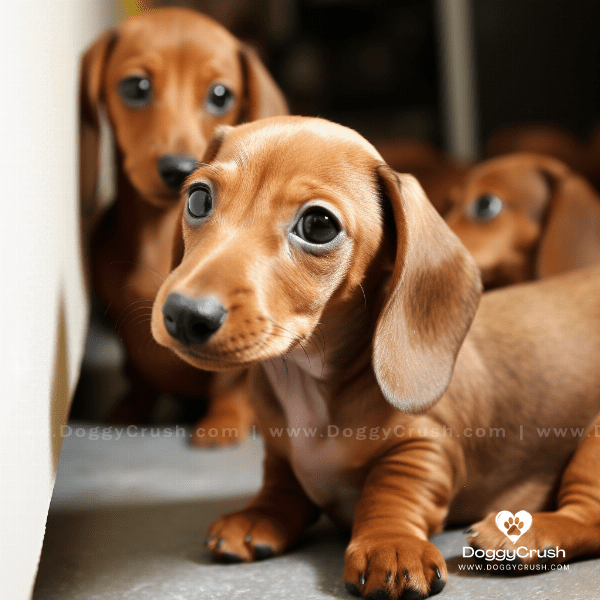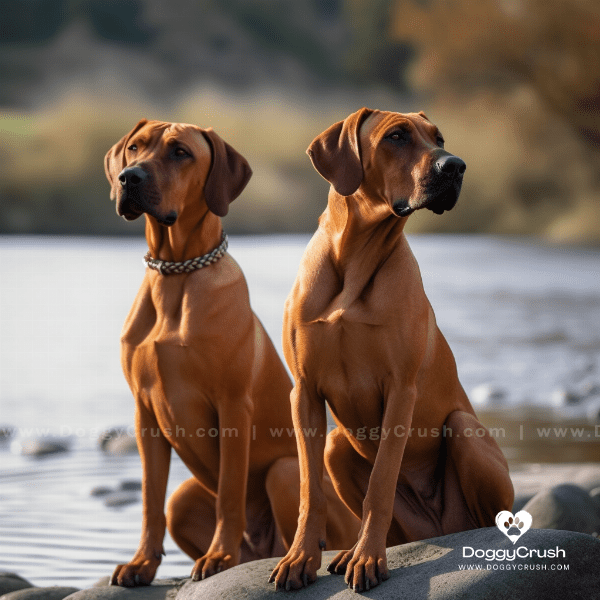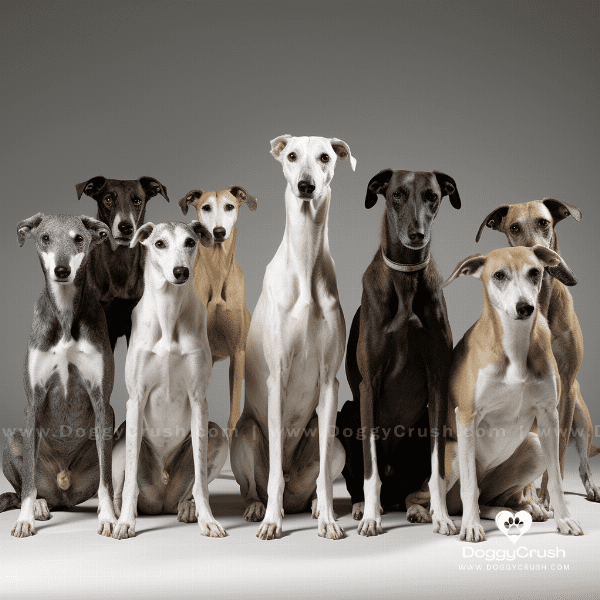Table of Contents
- History of Dachshund Dogs
- Physical Characteristics of Dachshunds
- Types of Dachshunds
- Temperament and Personality of Dachshunds
- Feeding and Nutrition for Dachshunds
- Grooming and Maintenance for Dachshunds
- Training and Exercise for Dachshunds
- Health Concerns for Dachshunds
- Living with Dachshunds: Tips and Tricks
- Finding the Perfect Dachshund for You
History of Dachshund Dogs
Dachshunds, also known as “wiener dogs,” are a breed of small hound dogs that were originally bred in Germany during the 15th century. The name “dachshund” translates to “badger dog” in German, and this breed was specifically bred for hunting badgers.
Origins
The exact origins of the dachshund breed are somewhat unclear, but it is believed that they were created by crossing various breeds of hunting dogs, including the Basset Hound, the French Pointer, and the German Pinscher. They were initially bred to hunt small animals such as badgers and rabbits, which they would chase down into their burrows.
Popularity
Dachshunds quickly gained popularity as hunting dogs due to their tenacious nature and excellent sense of smell. They were also highly valued for their ability to fit into small spaces, making them ideal for hunting in tight spaces like burrows.
In the early 1900s, dachshunds began to gain popularity as household pets. Their unique appearance, small size, and playful personalities made them a hit with families and they became a common sight in households across Europe and North America.
World War II
During World War II, dachshunds fell out of favor in the United States due to their German heritage. They were even referred to as “liberty hounds” during this time to distance them from their German roots. However, their popularity eventually rebounded and they became one of the most beloved breeds in the United States.
Conclusion
Today, dachshunds are still a popular breed, known for their long bodies, short legs, and loyal personalities. Whether they are working as hunting dogs or simply serving as beloved pets, dachshunds have a rich and interesting history that has helped to make them the beloved breed they are today.

Physical Characteristics of Dachshunds
Dachshunds are a small breed of hound dogs that are known for their unique body shape. Here are some of the physical characteristics that set them apart:
Body Shape
One of the most distinctive features of dachshunds is their long, low bodies. This body shape is a result of their breeding for hunting small animals, as it allows them to easily fit into tight spaces like burrows. Their elongated bodies are supported by short, stubby legs that are set far apart.
Coat Type and Colors
Dachshunds come in three different coat types: smooth, longhaired, and wirehaired. Smooth-coated dachshunds have a short, shiny coat that lies close to the skin. Longhaired dachshunds have a silky coat that is longer and softer than the smooth coat. Wirehaired dachshunds have a rough, wiry coat that is dense and water-resistant.
Dachshunds can also come in a variety of colors, including black, chocolate, cream, red, and even dappled patterns.
Head and Ears
Dachshunds have long, narrow heads with large, oval-shaped eyes. Their ears are long and droopy, and are set low on the sides of their heads. They also have a distinctive beard and mustache, which gives them a somewhat comical appearance.
Tail
Dachshunds have a long, thin tail that tapers to a point. Their tails are often carried high and wagged enthusiastically when they are happy.
Conclusion
Dachshunds are a unique breed of hound dogs that are known for their distinctive body shape and playful personalities. Whether they have a smooth, longhaired, or wirehaired coat, dachshunds are sure to turn heads with their comical appearance and endearing characteristics.
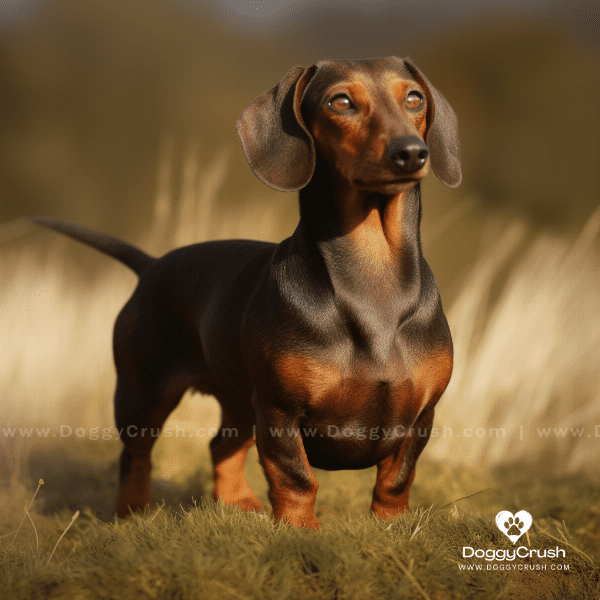
Types of Dachshunds
Dachshunds come in different sizes and coat types, each with its unique characteristics. Here are the three main types of dachshunds:
Toy Dachshunds
Toy dachshunds are the smallest of the dachshund breed, typically weighing between 5 and 7 pounds. They stand about 4 to 5 inches tall at the shoulder and have a chest circumference of around 10 inches. They are affectionate and charming dogs that make great companions for people living in apartments or smaller homes.
Coat Types
As mentioned earlier, dachshunds come in three different coat types: smooth, longhaired, and wirehaired.
- Smooth-coated dachshunds have a short, shiny coat that lies close to the skin.
- Longhaired dachshunds have a silky coat that is longer and softer than the smooth coat.
- Wirehaired dachshunds have a rough, wiry coat that is dense and water-resistant.
Each coat type requires different levels of grooming and care.
Conclusion
Dachshunds come in different sizes and coat types, each with its unique personality and characteristics. Whether you prefer the larger standard dachshunds or the smaller toy dachshunds, each type of dachshund is sure to bring joy and companionship to your life.
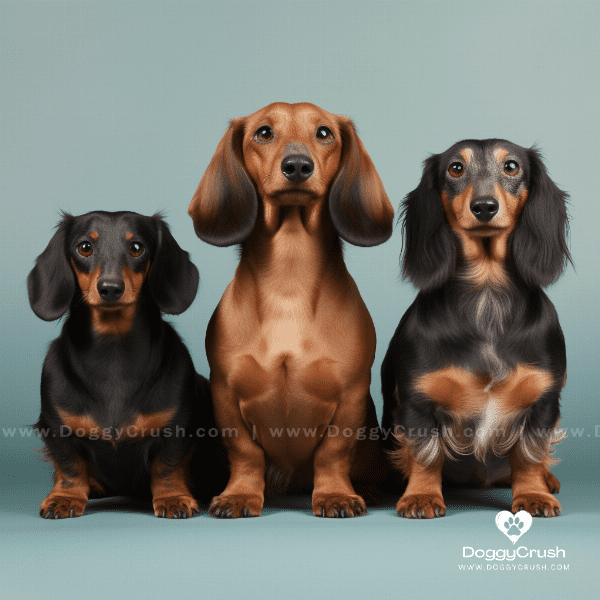
Temperament and Personality of Dachshunds
Dachshunds have a reputation for being loyal and affectionate companions, but they are also known for their strong-willed and independent nature. Here are some key aspects of their temperament and personality:
Loyal and Affectionate
Dachshunds are known for being loyal and devoted to their owners. They crave attention and affection and are happiest when they are by their owner’s side. They are also playful and love to cuddle with their owners.
Independent and Stubborn
Dachshunds are bred to be independent hunters, and this trait is reflected in their personality. They can be stubborn and difficult to train at times, as they like to do things on their own terms. It is important to establish boundaries and train them early to ensure they become well-behaved members of the family.
Protective
Dachshunds are naturally protective of their owners and their territory. They will bark to alert their owners of any potential threats and can be quite vocal when strangers approach. However, early socialization can help to minimize this behavior and ensure that they are friendly towards new people.
Active
Despite their small size, dachshunds are active and require regular exercise to stay healthy and happy. They enjoy walks, playing fetch, and exploring their surroundings. It is important to provide them with plenty of opportunities to exercise and play to keep them mentally and physically stimulated.
Conclusion
Dachshunds are a loving and loyal breed with a unique personality that sets them apart from other dogs. While they can be stubborn and difficult to train at times, they make great companions for those who are willing to put in the time and effort to properly socialize and train them. With their playful nature and affectionate personalities, dachshunds are sure to bring joy and companionship to any household.
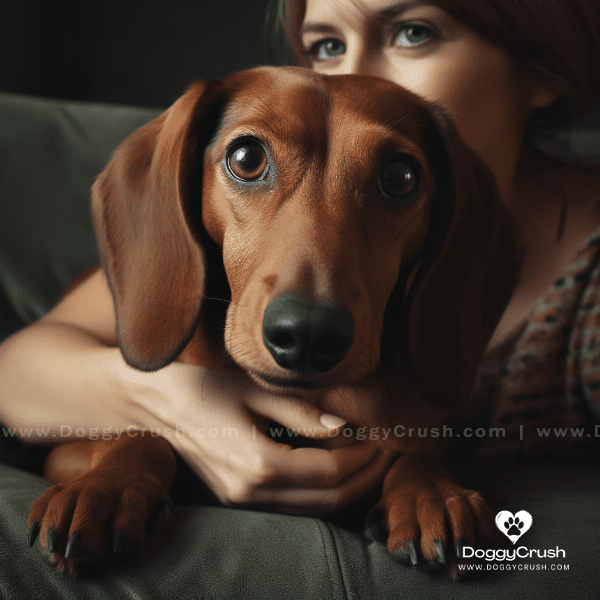
Feeding and Nutrition for Dachshunds
Feeding your dachshund a balanced and nutritious diet is essential for their health and well-being. Here are some key aspects of feeding and nutrition to consider:
Dietary Requirements
Dachshunds have specific dietary requirements that differ from other breeds of dogs. As a small breed, they require a diet that is rich in protein and fat to support their active lifestyle. However, it is important to ensure that they are not overfed as they are prone to obesity, which can lead to health problems.
Portion Control
Controlling the portion size of your dachshund’s meals is important to prevent overeating and obesity. A general guideline is to feed them about 1/4 to 1/2 cup of high-quality dog food twice a day, depending on their size and activity level. Avoid feeding them table scraps or human food as this can upset their stomach and lead to weight gain.
Feeding Schedule
Establishing a regular feeding schedule is important for dachshunds, as they thrive on routine. Feeding them at the same time each day can help regulate their digestion and prevent overeating. Avoid free-feeding, which means leaving food out all day, as this can lead to obesity.
Hydration
Providing your dachshund with fresh, clean water is essential for their health. Make sure to change their water bowl daily and monitor their water intake to ensure they are adequately hydrated.
Conclusion
Feeding your dachshund a balanced and nutritious diet is essential for their health and well-being. By controlling their portion sizes, establishing a regular feeding schedule, and providing them with fresh water, you can ensure that they stay healthy and happy. Consult with your veterinarian to determine the best diet and feeding plan for your dachshund based on their age, weight, and activity level.

Grooming and Maintenance for Dachshunds
Proper grooming and maintenance are important to keep your dachshund healthy and looking their best. Here are some key aspects of grooming and maintenance to consider:
Coat Care
Dachshunds come in three different coat types, each requiring different levels of care. Smooth-coated dachshunds require minimal grooming and only need to be brushed once a week. Longhaired dachshunds require more grooming, including daily brushing to prevent tangles and matting. Wirehaired dachshunds require the most grooming, including regular trimming and stripping to maintain their coat’s texture.
Bathing
Dachshunds should be bathed as needed, typically every two to three months, to prevent skin irritation and maintain their coat’s shine. Avoid over-bathing as this can strip their coat of natural oils and cause skin dryness. Use a gentle shampoo formulated for dogs, and rinse thoroughly to prevent residue build-up.
Nail Trimming
Trimming your dachshund’s nails regularly is important to prevent overgrowth and discomfort. As a general rule, trim their nails once a month or as needed, being careful not to cut into the quick (the pink part of the nail that contains blood vessels). If you are unsure how to trim your dachshund’s nails, consult with a professional groomer or your veterinarian.
Dental Care
Dental care is important for your dachshund’s overall health. Brush their teeth regularly, ideally daily, using a toothbrush and toothpaste formulated for dogs. This helps to prevent plaque buildup and bad breath. You can also provide them with dental chews or toys to help clean their teeth and promote healthy gums.
Conclusion
Proper grooming and maintenance are essential to keep your dachshund healthy and looking their best. By providing them with the appropriate coat care, regular baths, nail trimming, and dental care, you can ensure that they are happy and healthy. Consult with your veterinarian or a professional groomer if you have any questions or concerns about your dachshund’s grooming and maintenance routine.
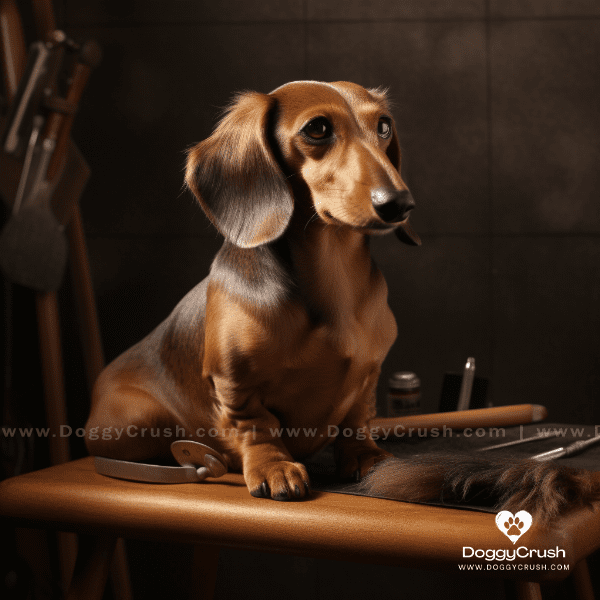
Training and Exercise for Dachshunds
Training and exercise are important for your dachshund’s physical and mental well-being. Here are some key aspects of training and exercise to consider:
Obedience Training
Obedience training is important for all dogs, including dachshunds. It helps to establish boundaries and build a strong bond between you and your dog. Start with basic commands such as “sit,” “stay,” and “come,” and gradually build up to more advanced training. Positive reinforcement training, using treats or praise, is an effective way to train your dachshund.
Mental Stimulation
In addition to physical exercise, mental stimulation is important for your dachshund’s well-being. Engage them in interactive play and provide them with puzzle toys or games to keep their minds active and prevent boredom.
Conclusion
Training and exercise are important for your dachshund’s physical and mental well-being. By providing them with obedience training, socialization, regular exercise, and mental stimulation, you can ensure that they are happy and healthy. Consult with a professional trainer or your veterinarian if you have any questions or concerns about your dachshund’s training and exercise routine.
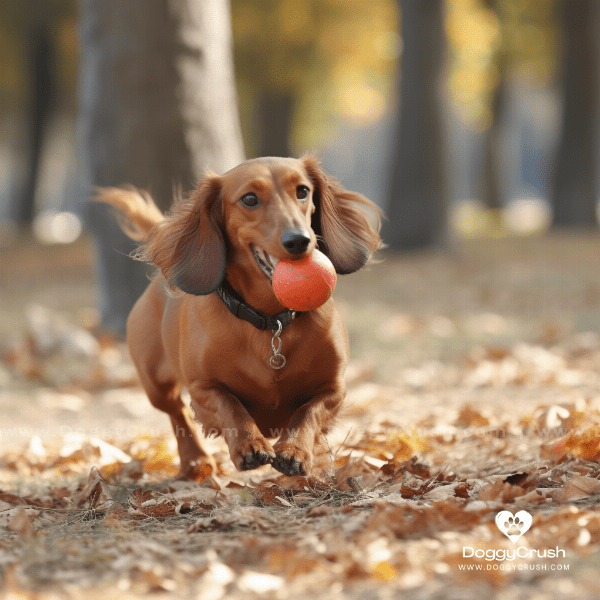
Health Concerns for Dachshunds
Dachshunds are generally healthy dogs, but like all breeds, they are prone to certain health issues. Here are some key health concerns to be aware of:
Intervertebral Disc Disease (IVDD)
IVDD is a common health concern in dachshunds due to their long, elongated spine. It occurs when the cushioning discs between the vertebrae in their spine become damaged or ruptured, leading to pain and possible paralysis. Signs of IVDD include difficulty walking, loss of coordination, and sensitivity to touch. Prompt veterinary care is necessary to prevent permanent damage.
Obesity
Dachshunds are prone to obesity, which can lead to a host of health problems such as diabetes, heart disease, and joint issues. Obesity can be prevented by controlling their portion sizes and ensuring they get regular exercise.
Dental Issues
Dachshunds are prone to dental issues such as gum disease and tooth decay. Regular dental care, including brushing their teeth and providing them with dental chews or toys, can help prevent these issues.
Eye Problems
Dachshunds are prone to eye problems such as cataracts, glaucoma, and retinal degeneration. Regular eye exams by a veterinarian can help catch and treat these issues early.
Conclusion
While dachshunds are generally healthy dogs, they are prone to certain health issues that owners should be aware of. By providing them with proper nutrition, regular exercise, and veterinary care, you can help prevent these issues and ensure that your dachshund lives a happy and healthy life. Consult with your veterinarian if you have any questions or concerns about your dachshund’s health.

Living with Dachshunds: Tips and Tricks
Living with a dachshund can be a rewarding and enjoyable experience, but it also requires some adjustments to your lifestyle. Here are some tips and tricks for living with a dachshund:
Set Boundaries
Establishing boundaries early on is important to prevent your dachshund from developing bad habits. This includes setting rules about where they can go in the house, what furniture they are allowed on, and what items they are allowed to chew on.
Be Patient
Dachshunds can be stubborn and difficult to train at times, but it is important to be patient and consistent with their training. Positive reinforcement training, using treats and praise, is an effective way to train your dachshund.
Supervise Playtime
Dachshunds can be prone to back problems, so it is important to supervise their playtime and avoid high-impact activities such as jumping or rough play.
Provide Adequate Exercise
Dachshunds require regular exercise to maintain their health and well-being. Daily walks, playtime, and regular trips to the park or dog run are recommended to keep them mentally and physically stimulated.
Conclusion
Living with a dachshund can be a fun and rewarding experience, but it requires some adjustments to your lifestyle. By setting boundaries, being patient with their training, socializing them early, supervising their playtime, and providing them with adequate exercise, you can ensure that your dachshund is happy and healthy. Consult with your veterinarian or a professional trainer if you have any questions or concerns about living with a dachshund.

Finding the Perfect Dachshund for You
Dachshunds make wonderful pets, but it is important to find the right one for your lifestyle and family. Here are some tips for finding the perfect dachshund:
Consider Your Lifestyle
Before getting a dachshund, consider your lifestyle and how it will fit with a dog. Dachshunds require regular exercise and attention, so if you have a busy lifestyle, you may want to consider a different breed.
Choose a Reputable Breeder
Choosing a reputable breeder is important to ensure that your dachshund is healthy and well-cared for. Look for breeders who have a good reputation and are registered with a reputable breeder organization.
Decide on a Coat Type
Dachshunds come in three different coat types: smooth, longhaired, and wirehaired. Each coat type requires different levels of grooming and care, so consider which type is best for your lifestyle.
Meet the Parents
Meeting the parents of the dachshund you are considering can give you a good idea of their temperament and personality. Look for parents who are friendly, well-behaved, and healthy.
Adoption Options
Consider adoption options such as breed-specific rescues or animal shelters. Adopting a dachshund can be a great way to provide a loving home to a dog in need.
Conclusion
Finding the perfect dachshund for you requires careful consideration and research. By considering your lifestyle, choosing a reputable breeder, deciding on a coat type, meeting the parents, and exploring adoption options, you can find a dachshund that will be a loving and loyal companion for years to come. Consult with a professional breeder or animal rescue organization if you have any questions or concerns about finding the perfect dachshund.
